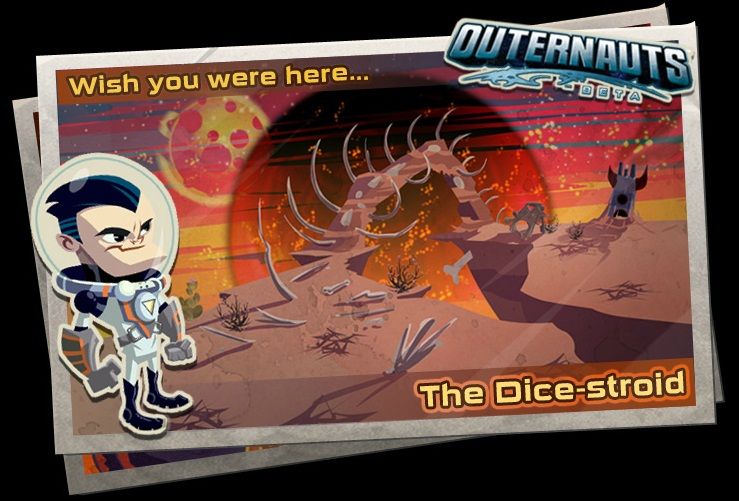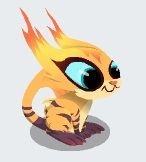Insomniac Games is a studio that is well known for providing a variety of console game experiences from Spyro to Ratchet & Clank to Resistance. When announced that Insomniac would be working on social games, many were not sure how they would be able to bring their style over to platforms such as Facebook. After spending time with the game though, it becomes clear that Insomniac takes the development of games on Facebook just as seriously as it does for home consoles.
I recently had a chance to pick the brain of Rowan Belden-Clifford an Associate Designer on Outernauts. Rowan provides a look behind the development process at Insomniac Games and how it varies for games on social networks.
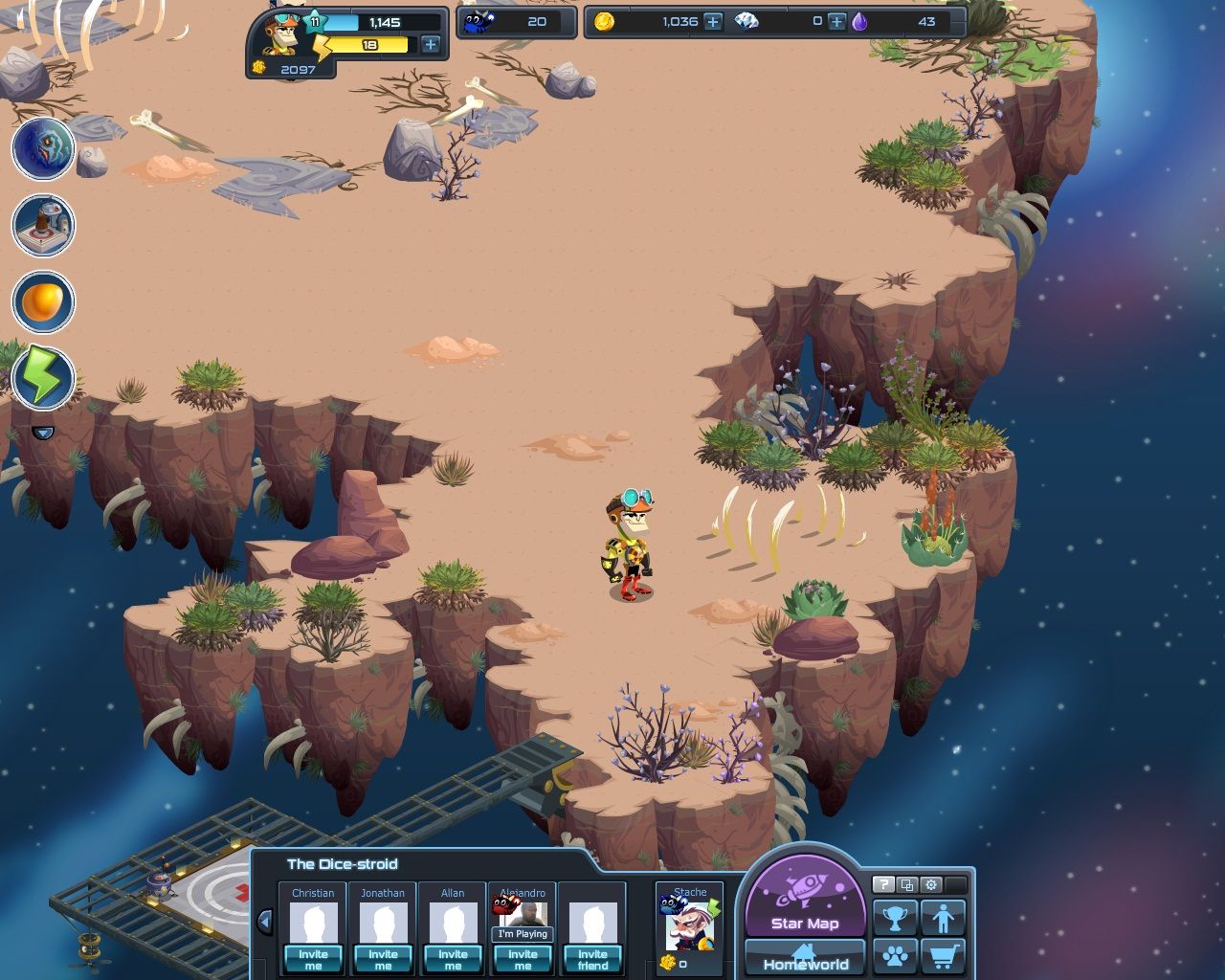
Paul Q: This is Insomniac's first time working on a Facebook game after working on so many console games, what were some of the challenges faced when designing a game for Facebook? Can you talk about some of the benefits that comes from not working on a console game?
Rowan: Let’s start with challenges. Technically, making a game for console and making a game on Facebook are almost completely different. Our team had to learn new codebases and build new tools from the ground up, which has been both frustrating and exhilarating! Design-wise, the social interconnectivity of Facebook was also a big challenge to tackle, because we had to figure out what sort of social mechanics would work for the game we wanted to make, and what commonly-used features just weren’t going to cut it. I’m really happy with many of the social mechanics we used (co-op dungeons, worldwide PvP, healing a friend’s beast), but it’s still a struggle we are having to this day, and players’ frustrations about certain social mechanics are certainly being heard.
Making Outernauts has been perfect for a lot of us on the team, because the small team size and ease of working on a 2D game means every team member can make changes quickly and autonomously! This makes the iteration time much faster and allowed us to get Outernauts, one of the biggest games Insomniac has ever made, to a fun and playable Open Beta in around half the time of a console project!
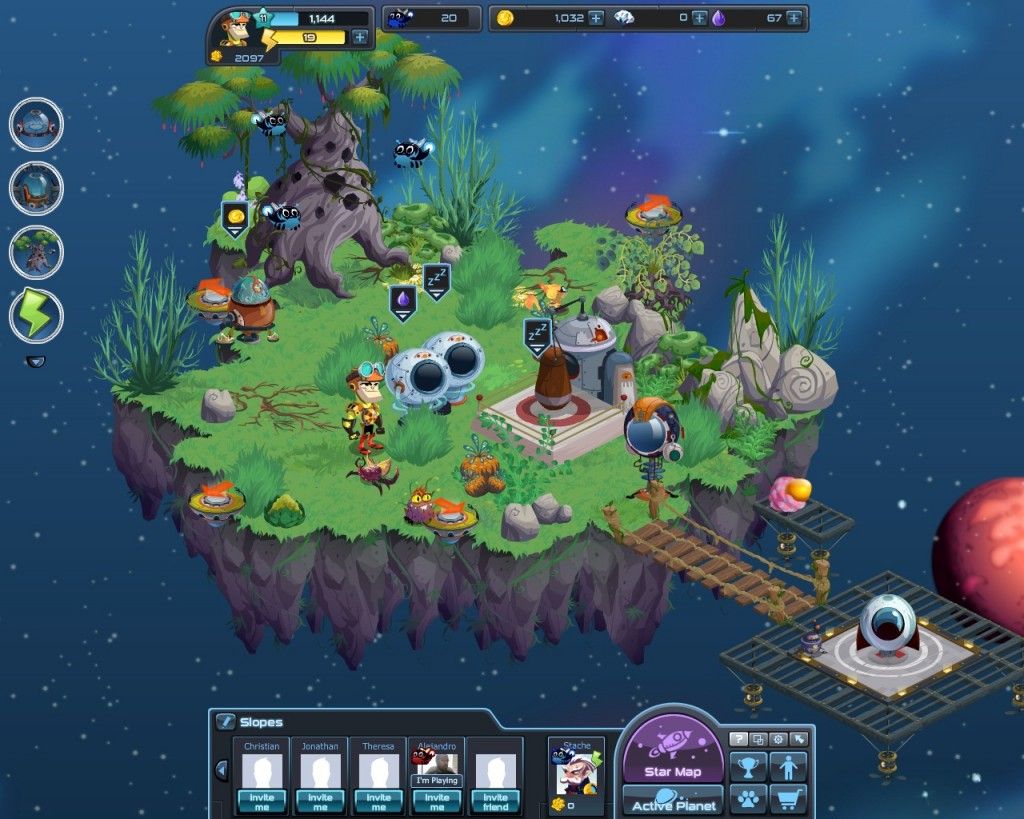
P: A game like this must have been a different experience for everyone working on it. What were some of the enjoyable aspects of developing this game? What would you take from this experience and translate into a console game?
R: Being a designer, the most enjoyable aspect of making Outernauts for me was creating a vibrant and fun sci-fi universe. One of our focuses with Outernauts was to make a game on Facebook that had real story, with real characters that players care about. All of Insomniac’s previous games have had this quality, and we saw the opportunity to bring that love of world creation and storytelling to a platform that didn’t have much to speak of in those areas. I can’t speak as to what form Outernauts will take with regard to projects from Insomniac, but having experiences like creating an in-depth economy system, incorporating fun social mechanics into a traditional-style game, or tuning our tutorial over and over again to make it the clearest it could be are experiences that I think many console games could learn from.
R: Many of us on the team are huge fans of both old-school RPGs like Final Fantasy and of monster-catching games like Pokemon, so with Outernauts we wanted to take those genres and, for lack of a better term, evolve them! (Sorry, I had to.) Seriously though, we wanted to see the monster-catching genre incorporate new mechanics and elements that the genre hadn’t done yet: things like worldwide PvP, asynchronous co-op areas, arenas with progressive tournaments, getting rid of random battles, and a unique and interesting setting and story were elements we wanted to bring to the genre. And as long as the comparisons between Pokemon and Outernauts stay positive, we’re more than happy to be mentioned in the same sentence.
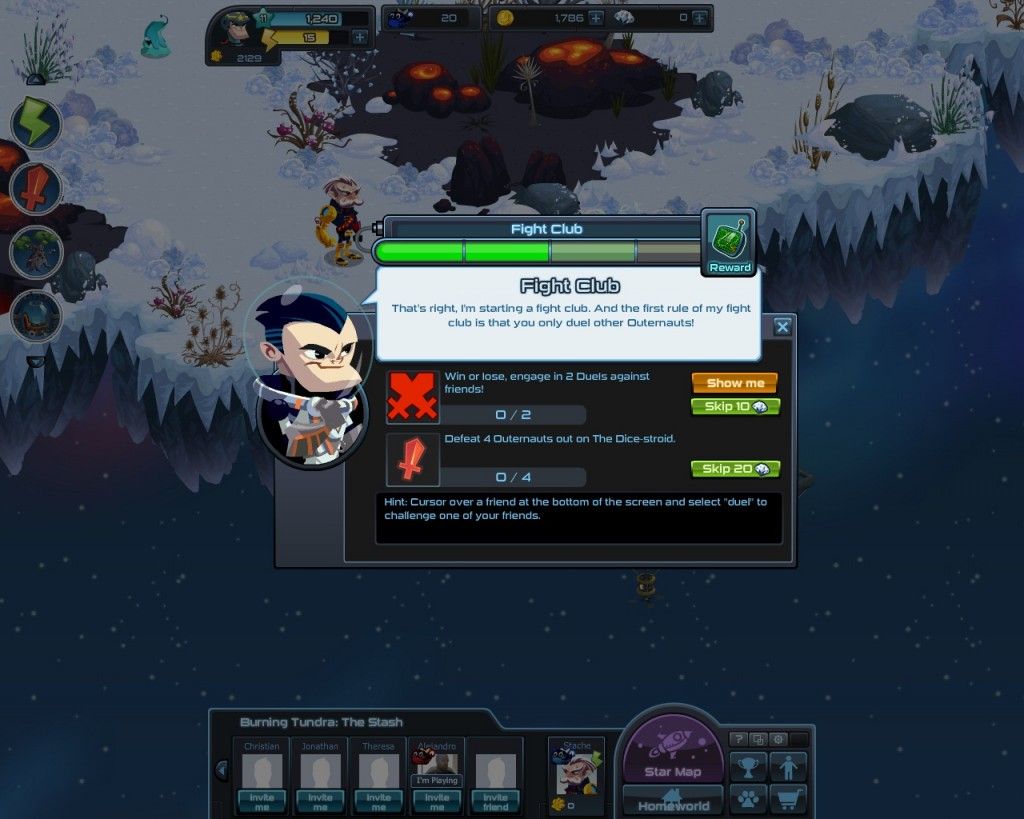
P: What interested you in creating a game for the social space? How much did trying to incorporate social aspects affect the design of the game?
R: At Insomniac, we’re always striving to make games that affect our audience, so when we saw the opportunity to reach a whole new audience on a whole new platform, we took it.
As far as the social aspects go, we were absolutely focused on making a fun game first. Before almost anything else was in the game, we had a functional battle system. Before any social elements were considered, we had a quests system and a story written. That being said, being on Facebook meant we had an opportunity to do things in Outernauts with friends that we hadn’t in any console game before it. Being able to visit friends and help them out, or being able to duel anyone in the world were things that we wanted to do from the start.
P: Social games usually focus much on metrics and numbers. When creating the game was there any pressure in generating profits for the game or how you would reach a certain user count? How do considerations like this affect game design?
R: Again, our modus operandi was, “Make a fun game, and people will play.” However, we do have to make money somehow in order to keep making content for Outernauts, so we really had to strike a fine balance between incorporating micro-transactions and creating a fun game. I’m pretty happy with the balance we struck, but we are constantly tuning that balance, even today. One example of a way that statistics have positively affected Outernauts are the Timed Quests that we just released last week: these were a result of us wanting to increase the amount of players that came back for many days in a row. Timed Quests are a pretty cool feature because they challenge players to do a big task in a certain period of time, and if they do, they get a unique reward for their Homeworld. Certainly makes me want to play more often and it added fun content to the game!
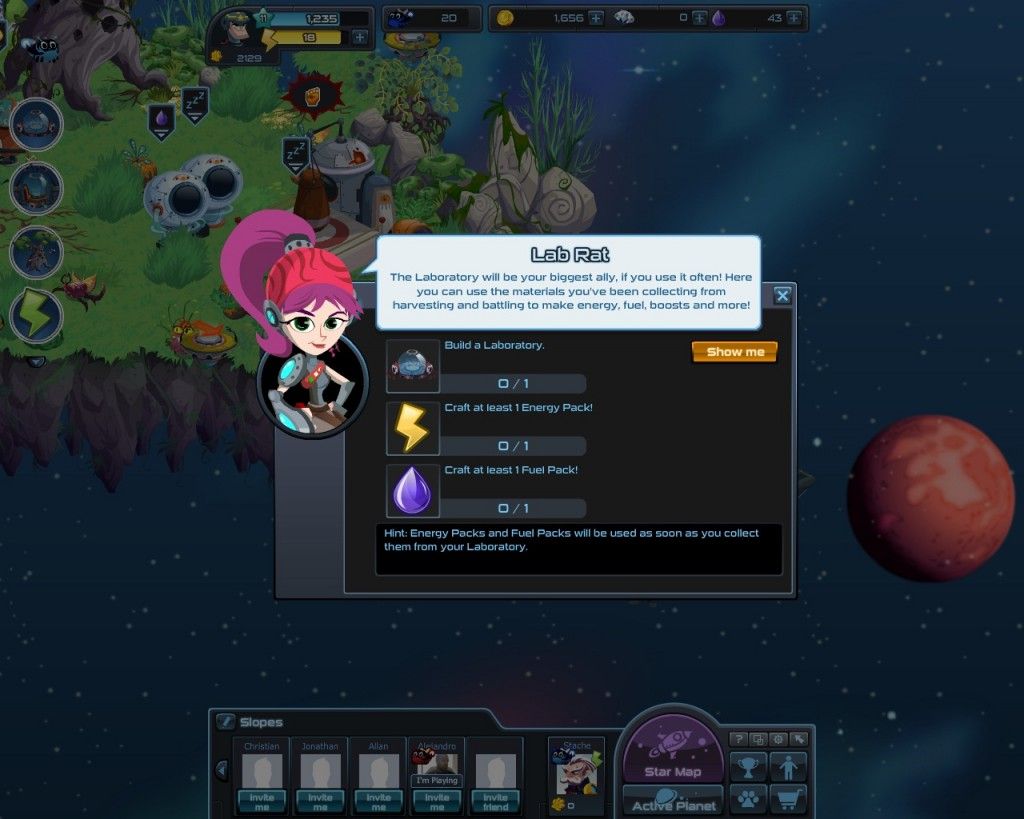
P: In terms of writing, the game gives off that Ratchet & Clank feel. What goes into the process of writing and creating characters for each mission? Did you focus on creating characters first, or the world?
R: Well first off, you hit the nail on the head because our lead for Outernauts is actually Insomniac’s Chief Creative Officer Brian Hastings, the creator of Ratchet & Clank. For Brian and I, it was really about creating a sci-fi universe that felt like it had a lot of mysterious history, while keeping that likeable, funny charm that Insomniac is so well known for. The story of Outernauts revolves around creators and destructors, so we came up with factions for each side that would help you or hinder you (Sludge Co, Pirates, Lunakins, other Outernauts) and then from those factions, we created a few unique characters that would represent who those faction were at heart (Axel, Round Roger or Bones, Lily or Fiora, Major Stache or Electra). This gives the player familiar faces that are their windows into a faction and its motivations.
The process of writing quests was essentially a hectic and packed two-week period in January where I, Brian, and designers Daniel Bang and Jack Burton sat down and just wrote every quest chain in the game, based on a loose story overview. Before that point, we had created the factions you were doing quests for and the characters that would give you the quests, so all that was left was to write the individual stories for each of these quest givers, and break each of those stories down into individual quests. One massive excel sheet and many months of implementing and refining later, we had a game with a full story and quest system that captures that whimsical and funny nature that the Ratchet games do.
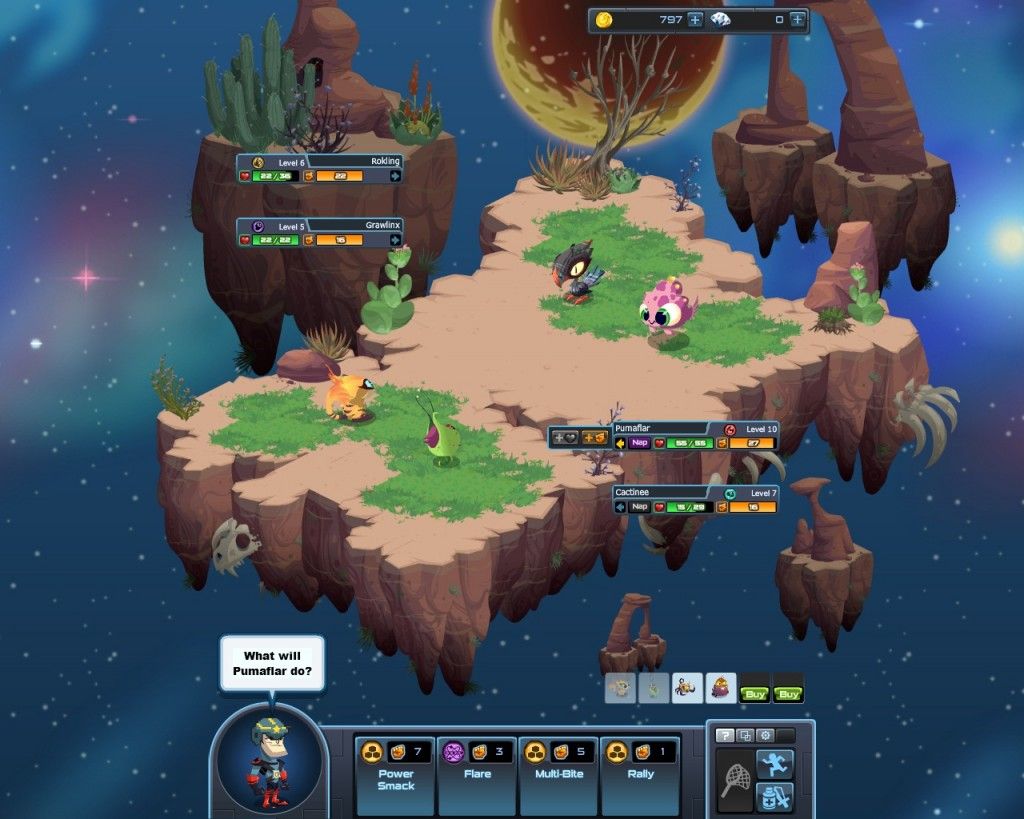
P: How difficult is it to come up with ideas for all the different beasts in the game and keep them unique and original?
R: Pretty difficult. Brian Hastings comes up with the ideas for a lot of them, with artists Tony Mora and David Coffman concepting and bringing them to fruition. When you factor in front and back views, idle and walking animations, and all of the ability animations that go into making one full beast, there’s a huge amount of work that goes into making a set of two or three for a new beast and its evolutions. As far as keeping them unique, we’ve found that our favorite-looking beasts have been beasts that are amalgams of multiple real-world animals or plants. That gives us a lot of combinations to work from, so you’ll be seeing some crazy looking new beasts coming out soon.
P: What were some of the challenges faced or taken into consideration when working on the story for this game, and how difficult was it to make a story for a social game?
R: One of the biggest considerations was the fact that most players have no invested interest in continuing to play your game if they are even slightly annoyed or confused. With a console game, you’ve already paid money for it, so you’re at least going to stick with it as much as possible to get your money’s worth. But in a free game on Facebook where players have the whole internet just a click away, we had to be incredibly careful with how much text we presented to the player at any given moment, which meant many brutal editing passes. We also had to present that crucial story info to players in a way that would keep their attention, which led to us creating the cut scene system you see at work at vital story moments.
Furthermore, we knew we had to make a story that was both intriguing and mysterious, but was also funny. Of the little story that most players would absorb, we wanted it to cause them to ask questions, wonder, and hopefully to laugh.
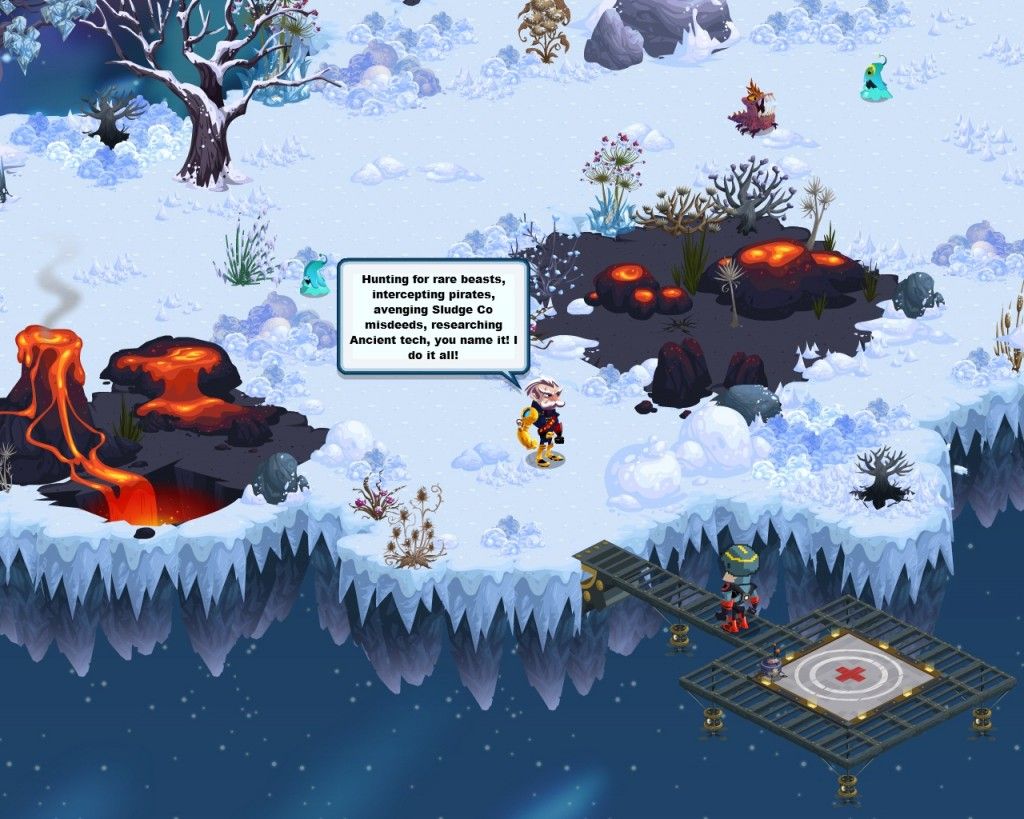
P: Would you consider making the game available as a stand-alone app on various platforms such as iOS, Android, PS Vita, or Windows Phone?
R: Making a mobile version of Outernauts would certainly be awesome, but right now we’re just focused on Facebook. It’s our first time as a company on a social media platform, and we want to get it right.
P: Social games require constant maintenance to evolve over time. As time progresses do you plan on expanding the game with more beasts, planets, and missions? Will you use it as a chance to add content that you may have not been able to add initially?
R: We are already expanding the game, as I type. We’re pushing out new content for Outernauts every week – that could include new beasts, new features, new story content, new quests, etc – pretty much until people stop playing the game. We have so many ideas for this game that we couldn’t have possibly crammed in before we hit Open Beta, so fear not, the Outernauts universe will be ever-expanding.
R: Oh man, I wish! As amazing as it would be to cavort around in Qwark’s spandex, Sony actually owns the Ratchet & Clack intellectual property, not Insomniac, meaning you probably won’t see one anytime soon. Sign those petitions!
There you have it folks, for more on Outernauts you can check out the page for the game at Insomniac's site or check out the game on Facebook. Also don't forget to start writing in those letters to Sony so we can get our Qwark spandex on.

